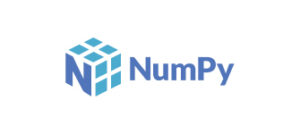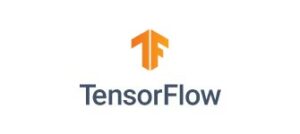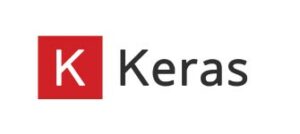Food Delivery App Development solutions
We are empowering the food Delivery industry with cutting-edge technology solutions.
12 Best Python libraries in 2023- Ultimate Guide

Python’s popularity has skyrocketed over the years, and it is now among the most widely used languages for ML and AI projects. Several traditional languages have been superseded by it since it is so much more effective than the standard fare of programming languages. Furthermore, its English-like instructions make it usable by both newbies and expert programmers.
Python’s massive library of open-source modules is another basic aspect that attracts many users. For various machine learning and artificial intelligence, data science, image, and data manipulation applications, these libraries are available to programmers of all skill and expertise levels.
While Python’s open-source modules are a big plus, they’re not the sole reason for it being a good choice for AI and ML projects. Python’s adaptability and adaptability also allow it to be used in tandem with other languages. In addition, it works with the vast majority of OSes and platforms available today in the market. While developing deep neural networks and machine learning algorithms from scratch might take a long time, several useful tools are available in Python to speed up the process. Its OOP nature also makes it a powerful tool for organizing and processing large amounts of data.
Python’s rising user base is another big attraction, especially for newcomers. The need for and supply of Python programmers and development firms has skyrocketed in recent years as the language has become one of the most popular in its field. Active members of the Python community are continually seeking new methods to apply the language to solve business challenges, and this interest has grown.
Now that you understand why Python is so popular, check out this list of the 12 greatest Python libraries for AI and ML.

Regarding artificial intelligence and machine learning, NumPy is the go-to Python library. It’s an open-source numerical library for solving various mathematical matrices. Many data scientists rely on NumPy since it is one of the most popular scientific libraries.
NumPy arrays are far more space-efficient than alternative Python lists and quicker and more user-friendly. NumPy allows you to transpose and restructure the matrix data as you see fit. Overall, when it comes to boosting the efficiency of machine learning models with minimal effort, NumPy is a fantastic solution.

Scikit-learn has evolved from a third-party add-on to SciPy to a fully-fledged Python library hosted on GitHub. It has several advantages, which is why major corporations like Spotify use it. Classical machine learning algorithms can benefit greatly, such as those used for spam detection, picture recognition, prediction, and consumer segmentation.
Scikit-compatibility with other tools in the SciPy stack is a major selling factor. The uniform and user-friendly interface of Scikit-learn facilitates data sharing and utilization.

SciPy, like its parent project NumPy, is an open-source, free library. Executing scientific and technical computing is extremely helpful for dealing with enormous datasets. Like NumPy, SciPy has built-in modules for optimizing arrays and performing linear algebra.
All of NumPy’s features are included in the language. However, they have been simplified into accessible scientific applications. Common applications include picture editing and the execution of high-level mathematical operations that do not require specialized knowledge or equipment. Because of its importance in scientific analysis and engineering, SciPy is considered one of the core Python libraries.

Pandas, another popular Python package, is frequently used in machine learning. It functions as a data analysis and manipulation library, easing the burden of working with developers with organized multidimensional data and time series ideas.
The Series and DataFrames provided by the Pandas library effectively represent data while allowing for various manipulations, making the library a fast and convenient tool for managing and exploring data.

TensorFlow is a freely available Python library with a focus on different programming. The library is a collection of materials for building DL, ML, and neural networks and may be used by both novices and experts.
TensorFlow may be deployed on several computing platforms, including central (CPU) and graphics processing unit (GPU) hardware. But, it’s better to run on a tensor processing unit for optimal results (TPU). Reinforcement learning is commonly utilized in ML and DL models, and the Python library makes it easy to display these models directly.

PyTorch is based on the C framework Torch and is another open-source machine-learning Python library choice. Data science libraries like PyTorch may be used with other Python libraries like NumPy. The library can generate editable computational graphs in-process. Natural language processing (NLP) and computer vision are two tasks that greatly benefit from using ML and DL.
One of PyTorch’s primary selling features is the speed with which it can execute even when dealing with complex graphs. It’s a versatile library that can run on basic CPUs and complex ones like graphics processing units. Natural language processing is made easier using PyTorch’s comprehensive set of APIs and toolkits.

A mathematical calculation Theano is a machine learning-focused Python library. Mathematical expressions and matrix computations can be optimized, defined, and evaluated. This permits the use of dimensional arrays to develop deep-learning models.
Theano is a specialized library largely used by computer scientists in machine learning and deep learning. It is 140 times quicker than a CPU at doing data-intensive computations because of its ability to integrate with NumPy and be run on a GPU instead.
Natural language processing is the application of all of the study of language to a computer. Understanding and communicating with people and other machines is its end objective. And that’s more complicated than it seems at first. Machines need to have many rules and nuances pointed out to them. Natural language processing (NLP) employs syntactic and semantic analysis to create sentences accurately and extract meaning, closing the gap between people and machines.
NLP is used in some capacity by every non-human entity with which you engage in conversation using human language. Smart assistants in your smartphones and houses, chatbots, and writing analytics programs like Grammarly are a few examples.

Matplotlib, a combination of NumPy and SciPy, was created to eliminate the requirement for the expensive and proprietary MATLAB language for statistical analysis. Python visualizations, both static and dynamic, may be built with the help of this comprehensive, free, and open-source package.
To prepare for data processing and training in machine learning, the Python library provides insight into the data. Python GUI toolkits are used to generate object-oriented Interfaces for plots and graphs. It also offers a MATLAB-like interface, allowing users to do the same operations possible in MATLAB.

XGBoost is an abbreviation that stands for “extreme gradient boosting.” This Python AI library was created to facilitate the usage of boosted decision-tree algorithms in data classification and regression development. These branches are the offspring of less robust regression models (that represent different computation tasks). To “fill in the gaps” as the model is being trained, more, less robust regression models are added until no further gains can be obtained. XGBoost’s improved scalability and performance are just what you need as your program expands.
 To create and test neural networks for use in machine learning and deep learning models, Keras provides a free and open-source Python toolkit. Training neural networks require little coding thanks to their ability to operate atop Theano and TensorFlow.
To create and test neural networks for use in machine learning and deep learning models, Keras provides a free and open-source Python toolkit. Training neural networks require little coding thanks to their ability to operate atop Theano and TensorFlow.
The modularity, extensibility, and adaptability of the Keras library have made it a popular choice. As a result, it’s a good choice for people who are just starting. In addition, it can work with optimizers, activation functions, layers, and goals. Keras is portable, working on both central and graphics processing units. It also has one of the largest selections of data formats.

Plotly, another free and open-source visualization toolkit, rounds up our selection of the 12 greatest Python libraries for machine learning and AI. Its high-quality, immersive, and print-ready charts are why it’s so popular among programmers. Boxplots, heatmaps, and bubble charts are just a few of the graph types available in Plotly.
Built on top of the D3.js, HTML, and CSS visualization toolkit, Plotly is one of the greatest data visualization tools available. It’s Django-based and written in Python, and it facilitates the generation of interactive diagrams. It’s compatible with many charting and data-analysis programs, making importing data a breeze. Plotly may also be used to make dashboards and slide presentations.
Regarding AI and ML, Python has a plethora of libraries to choose from, each with its own set of features and capabilities. TensorFlow, PyTorch, Scikit-Learn, Keras, and Pandas are some of the most well-known Python libraries for artificial intelligence and machine learning.
Which Python library is better for artificial intelligence and machine learning is a matter of personal preference. Before deciding on a library, you should consider the nature of your problem, the extent of your data, and your degree of experience.
You can also seek the help of a reliable Python development company who can guide you well on the right Python library for you. Glasier inc offers custom Python development services for the global clients. Call us now at +91 9099020109 or drop us a line at info@glasierinc.com to get the quote or book a free consultation
Share post:
NodeJS vs. Python: The Great Backend Dilemma
Top Popular SaaS (Software as Services) Application Examples